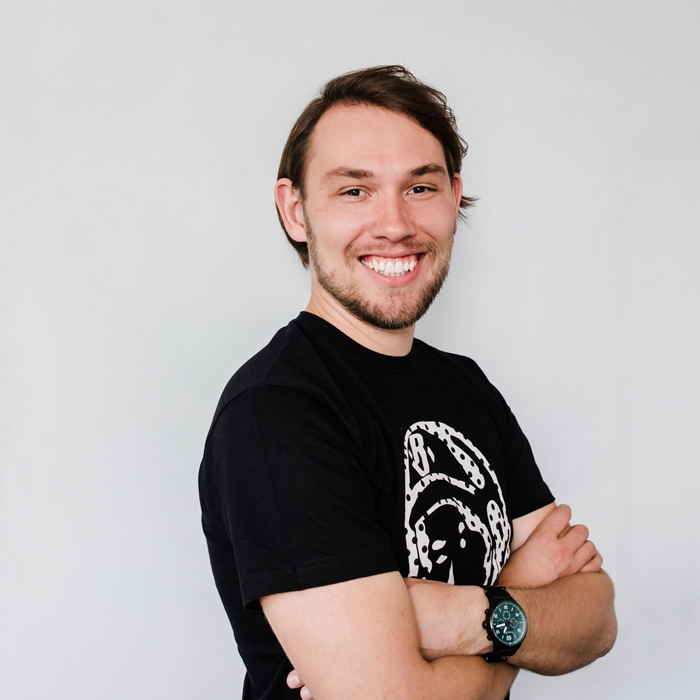Successful product discovery has to rest on a solid foundation.
That can’t happen unless your stakeholders are on board with your discovery plans.
If you’re a product strategist conducting discovery in-house, stakeholder interviews are a great way to get helpful feedback on your product idea.
In this article, we’ll guide you through all the steps you need to take to hold successful stakeholder interviews in product discovery.
Let’s get into it!
Choosing who to interview is more important than the interview itself.
If you pick the wrong stakeholders, the interviews aren’t going to provide you with value and will be a waste of time.
Why is that?
It’s because the term stakeholder applies to a very broad group of people.
It’s anyone that has a vested interest in your business.
For example, your local community and the government also count as stakeholders.
But, does it make sense to interview them during product discovery?
That’s why you should focus on interviewing internal stakeholders
source: Mad Devs
So, which internal stakeholders should you interview?
It’s a good idea to interview:
Senior executives
Your product team
Heads of sales and marketing
Customer support specialists
Each of these stakeholders will be able to give you unique insights that’ll help guide your discovery efforts in the right direction.
Senior executives will be able to tell you whether the idea aligns with the business strategy of the organization.
Heads of sales and marketing can give you insights about your target audience.
This will help you create a product that better meets your users’ needs.
Customer support specialists are a good example of “hidden” stakeholders .
If your product ends up with a bad design, they’ll be bearing the brunt of customer complaints.
They’ll be able to tell you about the most common complaints users have had about your other products.
This information will be invaluable and help you know what to avoid during discovery.
If you’re an agency doing discovery for clients, the stakeholders you should interview are:
Product manager
Product designer
Lead engineer and/or solution architect
Your client or their representative
Regardless if you’re doing discovery in-house or for a client, the most important stakeholders you’ll be interviewing will be your product team.
In particular, the product trio .
They’ll be the ones building your product and leading your discovery process.
That’s why it’s so important you interview them and use their insights to plan your product discovery.
“By failing to prepare, you’re preparing to fail.”
This quote by Benjamin Franklin is universally applicable. Stakeholder interviews are no exception.
If you want to get the most value from your stakeholder interviews, thorough preparation is essential.
You should start by creating an interview guide.
An interview guide consists of the main questions you’ll be asking, ordered thematically.
Stakeholder interviews, like user interviews, should gather deeper insights and should be semi-structured.
That’s why you should avoid asking close-ended questions i.e. yes/no questions.
Here’s an example how you should structure your interview guide:
source: Pressbooks
You should tailor your questions according to each stakeholder’s skills and expertise.
Start by creating a list of general questions you’ll be asking every stakeholder.
This’ll be your base interview guide.
Then, add precise questions you’ll be asking each stakeholder to draw out more specific insights related to their role.
It’s also a good idea to write down follow-up questions you’re likely to ask most of your interviewees.
Learn from a software company founder. Make your software product successful with monthly insights from our own Marko Strizic.
Keep in mind that the order of questions in the guide isn’t set in stone.
You should always follow the natural flow of conversation even if that means asking questions out of order.
Once you have your guide ready, it’s time to deal with the interview logistics.
Make sure you inform your stakeholders about the interview duration and what you’ll be asking them so they can prepare.
When deciding on the interview format, consider your stakeholders’ preferences and availability.
In-person interviews are the best option because you’ll more easily form a personal connection with your stakeholders.
You’ll also be able to take into account their non-verbal cues.
Regardless of the format, try to schedule the interviews as close as possible together.
This way, you’ll be more focused on the interviews and waste less time than if they were scattered over a longer period.
Would you feel comfortable being interviewed in a dank, windowless room?
Of course you wouldn’t.
And neither would your stakeholders.
That’s why it’s important that you create a comfortable environment for the interview.
A pleasant environment is crucial for building rapport with your stakeholders.
Choose a well-lit, private location away from the hustle and bustle of the office.
Even more important is creating a positive atmosphere during the interview.
Working in a positive work environment brings many benefits.
These benefits apply to the stakeholder interview, too.
source: Exude HC
So, how can you create a positive and comfortable environment during the interview?
It’s important to get off on the right foot.
Begin by introducing yourself and explaining your role in the product discovery process.
Then, explain the purpose of the interview to the interviewee and how you’ll use their insights during discovery.
Doing this will help establish transparency and trust between yourself and the stakeholders.
You should show a genuine interest in your stakeholder’s perspective during the interview.
Don’t rush through the interview or make it feel like an interrogation.
If they have any concerns, encourage them to share them openly.
Negative feedback is often more insightful than positive feedback, as it allows you to identify areas for improvement.
There are also other, far-reaching benefits if your stakeholders have a positive interview experience.
It can help you build stronger relationships with them and lay the groundwork for future collaboration.
We’ve mentioned that the point of stakeholder interviews is getting deeper insights for your discovery process.
The only way to get those insights is by asking open-ended questions.
source: Delighted
They don’t have a predetermined set of answers and the answers vary from respondent to respondent.
Asking open ended questions encourages your stakeholders to answer at length and go into as much detail as they want.
This way, you’ll get in-depth answers and more nuanced feedback.
So, what are some open-ended questions you should ask your stakeholders?
Here are a couple of examples :
What does success look like for this product?
What concerns do you have about this product?
What challenges do you foresee happening during discovery?
What problem are we solving for our users?
What should this product accomplish for the business?
Which similar products do people use?
Notice how none of these questions have a simple, one-word answer.
That’s why your stakeholders’ answers to these questions provide so much value.
So, how can you make sure you get the most value from the interview?
A technique that facilitates a successful interview is active listening .
source: Pareto Labs
In simple terms, active listening is using verbal and non-verbal cues to show your interviewees that you’re engaged with what they’re saying.
It helps them open up to you, meaning that you’ll get better results from your interview.
Listening to what your stakeholders are saying is difficult if you’re taking notes at the same time.
That’s why it’s a good idea to record your stakeholder interviews.
As the interviewer, your focus should be fully on the interview itself.
Recording the interview helps you focus fully on the conversation you’re having with your stakeholders.
So, does that mean you shouldn’t take notes at all?
On the contrary.
App development starts with product discovery…
You can have another member of your team sit in on the interview and take notes .
If you’re recording the interview, that might not be necessary.
But, it’s still a good idea to jot down any observations you think you might forget by the time the interview’s over.
It’s important to note that you need to gain the stakeholder’s consent to record the interview.
It’s a good idea to have a team member ready to jump in and take notes if a stakeholder refuses to be recorded.
General Data Protection Regulations (GDPR) in the EU mean that you can’t record someone before gaining their full consent.
Elsewhere in the world, regulations are more lax, but it’s still good practice to gain consent before recording.
This will foster transparency and trust with your stakeholders.
After the interview is over, you’ll have a lot of data.
If you’ve recorded your stakeholder interviews, you should also transcribe them.
This will make data analysis and pattern recognition much easier down the line.
Once you’re finished with the stakeholder interviews, the next step is to analyze the data.
Analyzing qualitative data isn’t as simple as analyzing quantitative data.
You’re not going to get quantifiable data points like “6/10 stakeholders like design A over design B”.
Qualitative data analysis is usually done in 4 steps, as pictured below:
source: Intellspot
So, what exactly do you do during each step?
Step 1: Familiarize yourself with the data.
Read and re-read the data you’ve gathered and decide which pieces of data are valuable enough to warrant further analysis.
You should write down detailed notes and your impressions of each interview as you’re reading the data.
Step 2: Categorize your data.
Group the data points into categories based on the topic that they cover.
So, all data points about your product’s design would go into one category, technical risks would go into another and so on.
Step 3: Look for patterns
Look for patterns and connections between the various data sets and data points.
You’re looking for consistency and common themes in your stakeholders’ feedback.
So, if several share the same concerns about technical risks, it’s a good idea to prioritize addressing that during discovery.
Step 4: Interpret the data
The final step is interpreting and drawing conclusions from the data.
You can ask yourself questions like:
Which areas should we focus on during discovery?
Have our stakeholders identified any major risks for our product?
Are they confident in our product idea?
Does our product fit in with our business strategy?
If you’ve asked your stakeholders the right questions, you’ll have no problem answering these questions.
Stakeholder interviews are a good way to start your product discovery process off right.
The insights that you get from interviews will be valuable for refining your product idea and creating a better product.
If you’re interested in learning more, check out our product discovery process and get in touch if you need help with discovery for your product.





